Stevens AeroModel 4 Charlie
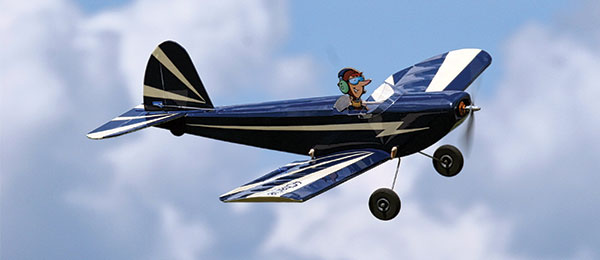
Written by Tom Sullivan An enjoyable small-field RC model Abridged product review Photos by the author Read the full product review in the October 2016 issue of Model Aviation.
Bonus video
Specifications
Model type: Short kit sport model Wingspan: 42 inches Airfoil: Flat bottom Length: 30 inches Weight: 16 ounces Power system: Park BL400 brushless motor; 25-amp ESC; Kinexsis 2S 1,100 mAh LiPo Radio: Four-channel; four submicro servos Flight time: 8 to 10 minutes (aerobatics); 12 to 14 minutes (cruising) Price: Laser-cut parts $60; upgrades (windscreen, landing gear, decals, plans) $25Pluses
Laser-cut parts that fit together extremely well. Well-thought-out construction aligns parts properly and easily. Can be framed up in a couple of evenings. Cockpit floor and pilot double as a battery hatch.Minus
Ground handling could be improved by using a tail wheel.Abridged product review
Because all of us are in a building frame of mind for this issue, my contribution is different from a traditional kit. It’s a short kit from Stevens AeroModel called the 4Charlie. If you’re not familiar with a short kit, it simply means that all of the parts that would be tricky to cut out are supplied. A builder supplies his or her own balsa sheeting, strips, hardware, etc. Doing things this way doesn’t necessarily keep the cost down, but it does allow a builder to use the quality of wood and hardware that he or she prefers, rather than trying to make do with what might come with the kit. What comes in this short kit? It contains several balsa sheets of varying thicknesses, which have laser-cut ribs, formers, supports, and blocking pieces. Also included is a piece of laser-cut cardboard.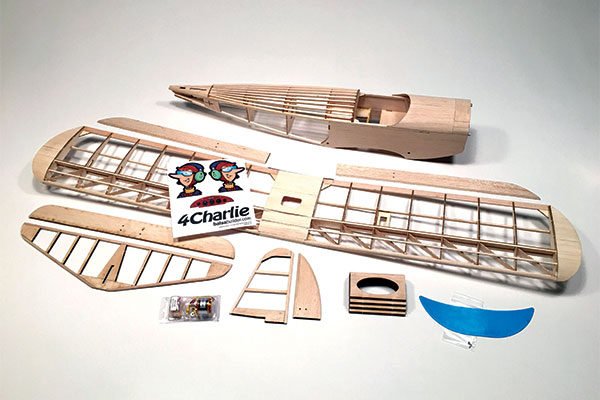
If you read the instructions and plans carefully, your Stevens AeroModel 4Charlie should look similar to what is shown here. From opening the box to completely framing the model will take only a few hours or a few nights of relaxing building.
The instructions and plans were supplied as part of this review, but must be purchased separately as part of Stevens AeroModel’s balsabuilder publication, volume 1, issue 2. Ten pages of the 60-page publication are devoted to the 4Charlie. Other topics covered in this issue are several building features, a couple of other construction articles, and some flight tips. Instead of being a step-by-step description of where each piece is glued, it is more of a general guide of how the construction should progress. It is up to the builder to be able to read and interpret plans to properly complete the kit.
Learn more about building with the 2015 MA Construction Series
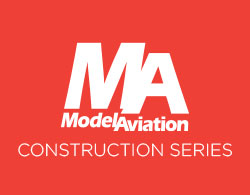 The Model Aviation Construction Series, first published in 2015, is collection of eleven installments taking a new builder through every step of the building process, from setting up a workspace to covering a newly-constructed model!
Download the entire series in PDF format!
The Model Aviation Construction Series, first published in 2015, is collection of eleven installments taking a new builder through every step of the building process, from setting up a workspace to covering a newly-constructed model!
Download the entire series in PDF format!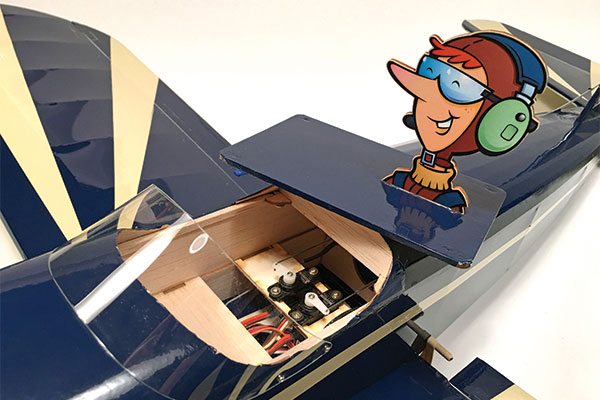
The author recommends paying a few extra dollars for the decal kit. That pilot not only adds some fun and whimsy to the 4Charlie, but it doubles as a battery hatch handle.
Before building the 4Charlie, I made sure that I had the materials I needed. These consisted of several sizes of 36-inch balsa strips, landing gear hardware, micro control hardware, a hardwood dowel and, of course, the radio and power system. One thing I found missing from the instructions and plans was any reference to making an exit for airflow over the battery. If you use the battery hatch, it completely covers the cockpit area, blocking any chance for the air to escape. I cut out a bit of the covering on the underside of the fuselage, toward the back. Granted, this power setup won’t be pulling a lot of amps, potentially causing overheating problems, but some airflow over the ESC and battery is needed.
Construction
Read more in Model Aviation.
Author Tom Sullivan gives you more information on his experiences building the 4 Charlie. Subscribe to Model Aviation or join AMA and read his full product review in the October 2016 issue!Flying
With the exception of some ground looping during the first takeoff, the 4Charlie’s maiden flight was about as uneventful as you could hope. (I mention the ground loops because there is a tail skid rather than a tail wheel, slightly limiting steering on the ground.) After a few clicks of trim, the model was flying level and hands off at half power. The best way I could describe the speed and how 4Charlie flies would be a cruiser. It’s certainly not overpowered and doesn’t fly particularly fast, which made it easy to grab the necessary flight shots. One area where I differed from the plans was not limiting the amount of servo travel for the control surfaces. I left them all at full throw, but dialed in a fair amount of exponential: 30% elevator, 25% ailerons, and 10% rudder. It turned out to be perfect for my taste, allowing me to maneuver the 4Charlie in some tight spaces with no problems. Basic aerobatics are possible, but you have to work at them to keep your speed up. Because of the flat-bottom airfoil, rolls and inverted passes require a touch of down-elevator and throttle to keep the 4Charlie level when upside down. From level flight, loops are slightly egg-shaped, as are half or full Cuban 8s. I feel that the 4Charlie is best suited for cruising. Whether a few mistakes high or on a low-level pass, the model looks great simply putting along at 1/2 to 5/8 throttle. The wind will bump it around some because it only weighs 16 ounces, but buzzing the runway on low-level passes during the late evening hours is a real treat. Because the 4Charlie displays no bad stall tendencies when properly balanced, touch-and-gos and landings are a breeze. Simply line up on the runway, slowly lower the throttle, and fly it down to an easy, main gear landing every time. Be ready for a ground loop after the tail skid touches down on a paved surface, but it’s a quick, harmless spin.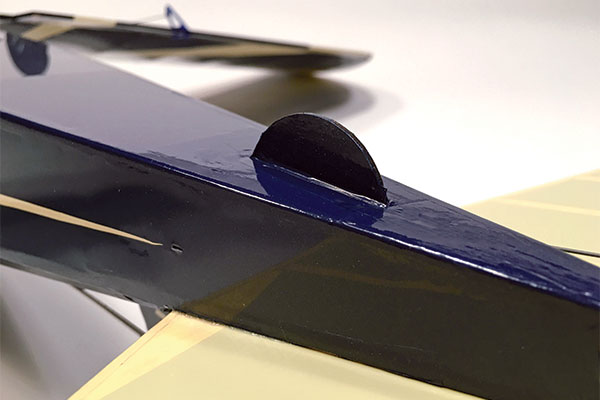
The tail skid is an inexpensive and lightweight way to keep the rear of the fuselage off the ground. Be mindful that crosswind landings and takeoffs can be quite eventful. Choose to go straight into the wind for the best results.
Flight time on a 1,200 mAh LiPo battery pack is roughly 10 minutes, depending on how much you push the throttle. For simply cruising, I think it’s possible to extend it upward of 13 to 15 minutes, although I haven’t tried that yet.










1 comments
Love it!
Add new comment